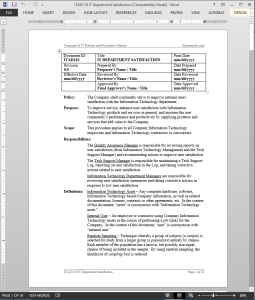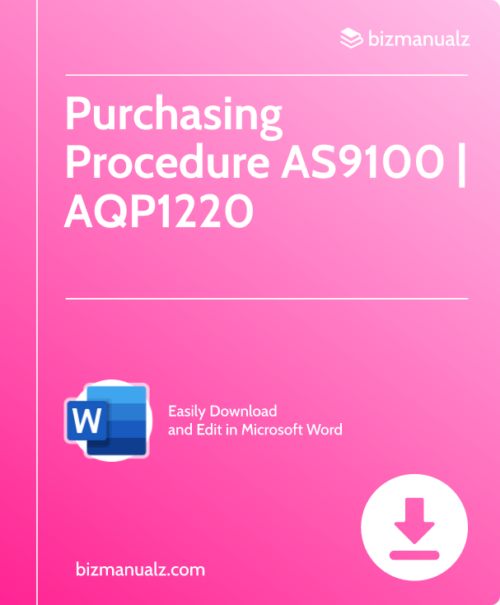Improve IT Department Satisfaction with Our Procedure Template Word Product
Are you struggling to keep your IT department satisfied and productive? Look no further than our IT Department Satisfaction Procedure Template Word product. This comprehensive template provides a step-by-step guide to improving IT department satisfaction, ensuring that your team is motivated and efficient.
Our template includes detailed instructions on how to assess IT department satisfaction, identify areas for improvement, and implement effective solutions. With our easy-to-use Word format, you can customize the template to fit your specific needs and goals.
By using our IT Department Satisfaction Procedure Template Word product, you can:
- Improve communication between IT staff and management
- Identify and address common sources of dissatisfaction, such as workload and resource allocation
- Implement effective solutions to improve IT department satisfaction and productivity
- Track progress and measure success over time
Our template is designed to be user-friendly and accessible, even for those without extensive IT experience. With clear instructions and customizable sections, you can easily adapt the template to fit your unique needs and goals.
Don’t let IT department dissatisfaction hold your organization back. Invest in our IT Department Satisfaction Procedure Template Word product today and start improving productivity and morale across your team.
IT Department Satisfaction Procedure
The IT Department Satisfaction Procedure improves the IT staff’s service, enhances user approval of the department’s IT products and services, and increases the user community’s performance and productivity by supplying products and services that add value to your company.
Gauge user satisfaction of new IT installations or updates with proper follow-up or an IT customer satisfaction survey. The IT Department Satisfaction Procedure applies to all of your company’s IT employees as well as IT contractors or outsourcers. (10 pages, 1787 words)
IT Department Satisfaction Responsibilities:
The Quality Assurance Manager is responsible for reviewing IT department survey question reports on user satisfaction (from Information Technology Management and the Tech Support Manager) and recommending actions to improve user satisfaction.
The Tech Support Manager is responsible for maintaining a Tech Support Log, reporting on user satisfaction in the Log, and taking corrective actions related to user satisfaction.
Information Technology Department Managers are responsible for reviewing user satisfaction summaries and taking corrective actions in response to low user satisfaction.
IT Department Satisfaction Definitions:
Information Technology Asset – Any computer hardware, software, Information Technology-based company information, as well as related documentation, licenses, contracts or other agreements, etc. In the context of this document, “asset” is synonymous with “Information Technology asset.”
Internal User – An employee or contractor using company Information Technology assets in the course of performing a job (task) for the company. In the context of this document, “user” is synonymous with “internal user.”
Random Sampling – Technique whereby a group of subjects (a sample) is selected for study from a larger group (a population) entirely by chance. Each member of the population has a known, but possibly non-equal, chance of being included in the sample. By using random sampling, the likelihood of sampling bias is reduced.
Statistically Significant – A finding (the observed difference between the means of two random samples, for example) is described as statistically significant when it can be demonstrated that the probability of obtaining such a difference by chance only is relatively low.
 IT Department Satisfaction Procedure Activities
IT Department Satisfaction Procedure Activities
- General IT Department Satisfaction
- Post IT Service Follow-Up
- IT User Survey
- IT User Satisfaction Review
IT Department Satisfaction Procedure References
- ISO 9001:2000 Standard- Quality Management Systems-Requirements, Clause 8.2.1 (Customer Satisfaction)
IT Department Satisfaction Procedure Forms






















Reviews
There are no reviews yet.